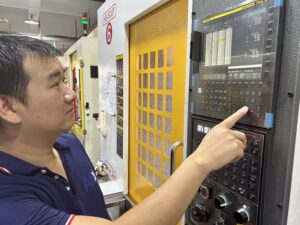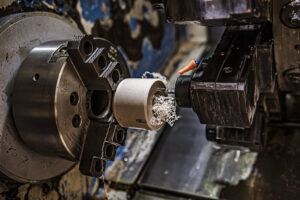Precision-manufactured CNC machining technology
The application of CNC technology has brought about qualitative changes in traditional manufacturing. In recent years, the development of microelectronics technology and computer technology has given CNC technology new vitality. CNC technology and CNC equipment are an important foundation for the industrial modernization of various countries.
CNC machine tools are mainstream equipment in modern manufacturing and essential equipment for precision machining. They are an important symbol that reflects the technical level of modern machine tools and the technological level of modern machinery manufacturing. They are strategic materials related to the national economy and people’s livelihood and the cutting-edge construction of national defense. Therefore, all industrially developed countries in the world have taken major measures to develop their own CNC technology and industry.
The structure of CNC machine tools
- Control medium: The control medium is a medium that stores all the information about the position of the tool relative to the workpiece required for CNC machining. It records the processing program of the part. Therefore, the control medium refers to the information that transmits the part processing information to the CNC device. carrier.
- CNC device: CNC device is the core of CNC machine tools and is known as the “central system”. Modern CNC machine tools use computer numerical control device CNC. The CNC device includes an input device, a central processing unit (CPU), and an output device. The CNC device can complete information input, storage, transformation, interpolation operations, and realize various control functions.
- Servo system: The servo system is a driving component that receives instructions from the CNC device and drives the movement of the machine tool actuator. Including spindle drive unit, feed drive unit, spindle motor and feed motor, etc. When working, the servo system receives the command information from the CNC system, and after comparing the command information with the position and speed feedback signals, it drives the moving parts or execution parts of the machine tool to process parts that meet the drawing requirements.
- Feedback device: The feedback device is composed of measuring components and corresponding circuits. Its function is to detect speed and displacement and feed the information back to form a closed-loop control. Some CNC machine tools with low precision requirements without feedback devices are called open-loop systems.
- Machine tool body: The machine tool body is the entity of the CNC machine tool and the mechanical part that completes the actual cutting process. It includes the bed, base, workbench, saddle, spindle, etc.
Characteristics of CNC machining technology
- CNC numerical control machining technology also follows the rules of machining and cutting, which is roughly the same as the machining technology of ordinary machine tools. Because it is an automated processing that applies computer control technology to mechanical processing, it has the characteristics of high processing efficiency and high precision. The processing technology has its own unique features, the process is more complex, and the work step arrangement is more detailed and thoughtful.
- CNC numerical control machining technology includes the selection of cutting tools, determination of cutting parameters, and design of the cutting process route. CNC machining technology is the foundation and core of CNC programming. Only with reasonable technology can high-efficiency and high-quality CNC programs be compiled. The criteria for measuring the quality of CNC programs are: the minimum processing time, the minimum tool wear and the best processing of the workpiece.
- The CNC machining process is part of the overall processing technology of the workpiece, or even a process. It must cooperate with other front and rear processes to ultimately meet the assembly requirements of the overall machine or mold, so that qualified parts can be processed. CNC machining processes are generally divided into rough machining, medium-rough corner cleaning, semi-finishing and finishing steps.
Steps of CNC machining parts
- Analyze the part drawing to understand the general situation of the workpiece (geometric shape, workpiece material, process requirements, etc.)
- Determine the CNC machining process of the parts (processing content, processing route)
- Carry out necessary numerical calculations (base point, coordinate calculation of nodes)
- Write the program list (different machine tools will be different, follow the manual)
- Program verification (input the program into the machine tool, and perform graphic simulation to verify the correctness of the programming)
- Process the workpiece (good process control can save time and improve processing quality)
- Workpiece acceptance and quality error analysis (the workpiece is inspected, and if it is qualified, it will flow into the next process. If it is not qualified, the cause of the error and the correction method will be found through quality analysis).

 Deutsch
Deutsch Français
Français 日本語
日本語 Español
Español

